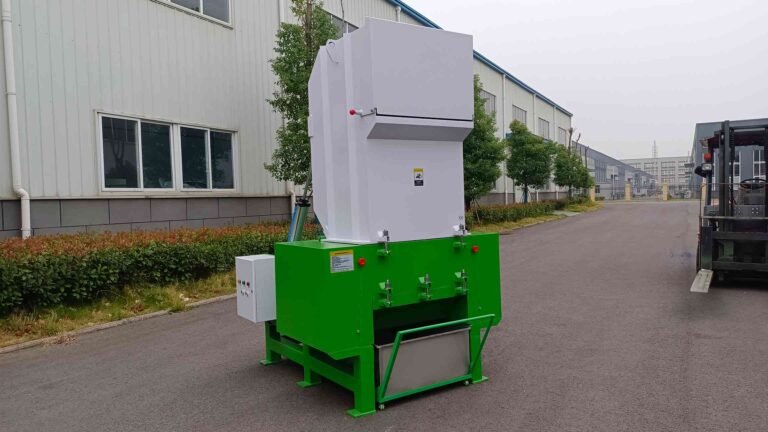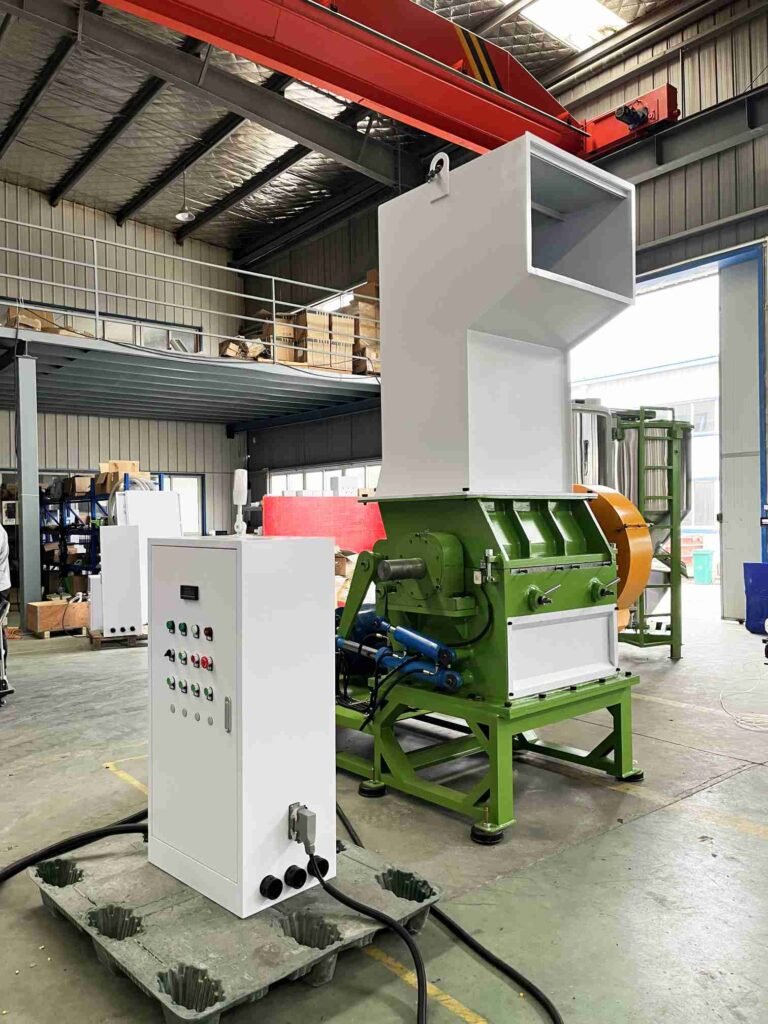A dependable plastic crusher is the most important component of any modern plastic recycling or molding factory. Whether your business runs a plastic molding unit, industrial box dryer, powder loader, water cooled chiller, or air cooled chiller, a powerful plastic crusher machine or plastic granulator will directly impact your output quality and overall efficiency. A neglected crusher will lead to downtime, loss of raw materials, and high maintenance costs. In an effort to curb such problems, operations personnel and maintenance personnel need to embrace a methodical approach to fault finding, regular maintenance, as well as daily inspections. This handbook will guide you through how to maintain your crusher in top shape at the highest lifespan when attaining peak productivity.

I. Introduction
The waste plastic crusher machine forms a critical part of a plastic recycling plant. It shreds plastic waste into reusable pellets, which are more convenient to move and re-mold. Together with other ancillary machinery like a plastic machine, box dryer industrial, or powder loader, it makes factories able to easily manage scrap and avoid material loss. Efficient operation by the crusher makes sure that production is not halted and that there is uniform quality output. Maintenance on a daily basis is the simplest and most affordable way of evading unexpected breakdowns and costly downtime.
II. Daily Inspection and Maintenance
Morning checks are the first step to maintain your plastic crusher in top condition daily. Even minor problems identified early can prevent major breakages in the long run.

1. Visual Inspection
Daily, inspect the entire surface of the crusher for wear, loose screws, or misalignment. Inspect blades for sharpness and rust or cracking. Clean and remove the hopper and the feeding chute to allow free feeding. Keep any mounted powder loader and industrial box dryer in good working condition to dry out material and render it crushable.
2. Lubrication
Periodic lubrication keeps the moving parts of the crusher running. Use only recommended oil or grease recommended by the manufacturer. Take special care of bearings and high-load shafts. A good cooling system, for instance, water cooled chiller or air cooled chiller, should be inspected regularly to avoid overheating, which will destroy bearings and motors.
III. Periodic Maintenance Procedure
Although regular checks are necessary, regular servicing brings stability in the long term and reduces the likelihood of any abrupt breakdowns.
1. Monthly Blade Check and Sharpening
Blades must be sharpened to crush effectively. Check them at least once a month and sharpen or replace them when worn out. Dull blades result in excess energy consumption and poor quality output.
2. Internal Cleaning
Every month, open the crusher cover and clean the parts inside extensively. Remove dust and deposits that may clog the system. This maintenance renders the plastic molding machine and industrial box dryer free from contaminants.
3. Inspect the electrical system
Inspect for overheating or loose wiring connections, switches, and control panels. A faulty electrical system will make the plastic crusher unexpectedly shut down, leading to lost production. Keep all the connections kept tight and worn-out wires replaced immediately.
IV. Troubleshooting Plastic Crushers and Reasons They Fail
Even under routine care, a side plastic crusher for injection molding can sometimes face unexpected issues — knowing what to check helps you troubleshoot fast.
1. Abnormal Noise
Excessive vibration is often caused by loose parts or faulty bearings. Worn-out or unbalanced blades are the second cause of vibrations and odd sound. Routine maintenance allows these to be detected in good time.
2. Poor Crushing Performance
When the output size of the crusher varies or throughputs reduce, the blades can be blunt or wrongly installed. Blockage in the hopper or malfunctioning powder loader also causes poor performance.
3. Overheating of the Motor
Overheating can generally be caused by inadequate ventilation or overloading. Ensure your water cooled chiller or air cooled chiller operates as it should. Clogged vents or a malfunctioning cooling fan may make the motor overheat and suddenly shut down.

V. Basic Steps and Tips for Troubleshooting
An organized methodology saves time and also prevents larger issues when troubleshooting your plastic crusher.
1. Stop and Inspect Safely
Always turn off the machine and disconnect the power supply first before removing covers or guards. Safety always comes first in inspection.
2. Find the Fault
Observe the crusher operate, listen for unusual noises, and examine error pointers. Cross reference symptoms to the most common faults described in the handbook. This discovers the fault faster.
3. Repair or Replace Parts
Replace faulty wires, loose screws, or worn-out blades promptly. If the cooling system reports a fault, service the air cooled chiller or water cooled chiller immediately to avoid other parts going to waste.
VI. Conclusion
Maintenance is the best you can do for your plastic crusher. By employing daily checks, periodic maintenance, and effective troubleshooting, you can reduce costly repairs and get the most uptime. Remember that your crusher is not the only one to benefit in this way — all of your support equipment like the industrial box dryer, plastic molding machine, powder loader, water cooled chiller, and air cooled chiller also benefit from a clean, efficient crush process. When your whole operation is running smoothly, your production is competitive and profitable in the long term.
